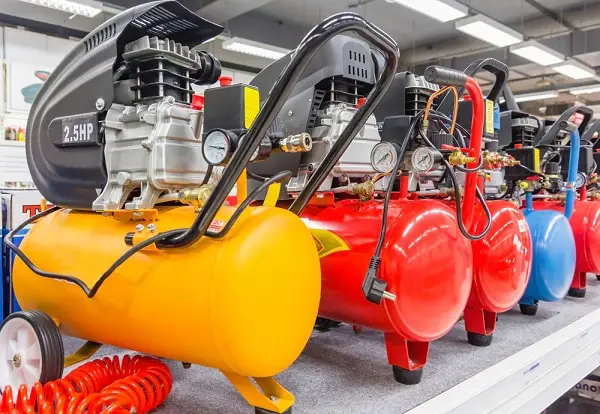
Air Compressor CFM vs. SCFM
Air compressors have many variations as they come in different sizes. But all different types of air compressors are rated in the units of CFM. CFM stands for Cubic Feet per minute; it is a measure of airflow rate that is being pushed out of an air compressor. CFM is very important as it determines the appropriateness of compressor because in some situations compressor with high CFM is required. It is necessary to take CFM into consideration before choosing an air compressor. SCFM stands for Standard Cubic Feet per minute; it determines the volume of air that an air compressor can produce at a given pressure. Both are the most common ratings of an air compressor. They are also known as the non-SI units to measure gas.
However, the basic difference between CFM and SCFM is that CFM is always a smaller number as compared to SCFM, because CFM is calculated with only vales that are taken under the pressure, thus, the air volume number is small. On the other hand, SCFM calculation requires air expansion to a standard state so variables of temperature, pressure, and humidity can be considered. Thus, SCFM values are always higher. Often, CFM values are used to determine air compressor and SCFM values are used to determine the air tools.
CFM is calculated at actual conditions whereas, SCFM is calculated at standard conditions, which are, 1 atm equals to 14.7 PSI, 68-degree Fahrenheit at 36 percent relative humidity. They are calculated differently because the units of CFM with the flow rate volume indicates that the flow amount was measured at actual conditions, such as actual pressure and actual temperature. It is very important to distinguish between CFM and SCFM with pressure and temperature, the air density changes. Stating the flow rate of air in units of SCFM is easier to compare different conditions and also it makes certain calculations simpler.
CFM is like an outdated style measurement for the air compressor as it does not take into account a lot of factors, such as lost airflow due to heat and friction, the tank, and cylinder fittings. SCFM takes into consideration factors like temperature, pressure, and humidity as they define the standard conditions. SCFM normally starts with a measured flow rate by CFM and then goes on to adjust at the standard conditions. The standard conditions are decided by industry after doing a lot of research on the subject, there is, atmosphere pressure of 14.7 PSI, 68-degree Fahrenheit and 36 percent relative humidity.
SCFM lets the flow rate volume calculate in a controlled environment with standard conditions, whereas, CFM calculated the volume of air at the actual conditions with the exact pressure and temperature of the compressor. In most cases, SCFM measurement is preferred over CFM as it also tells the values of pressure and temperature.


